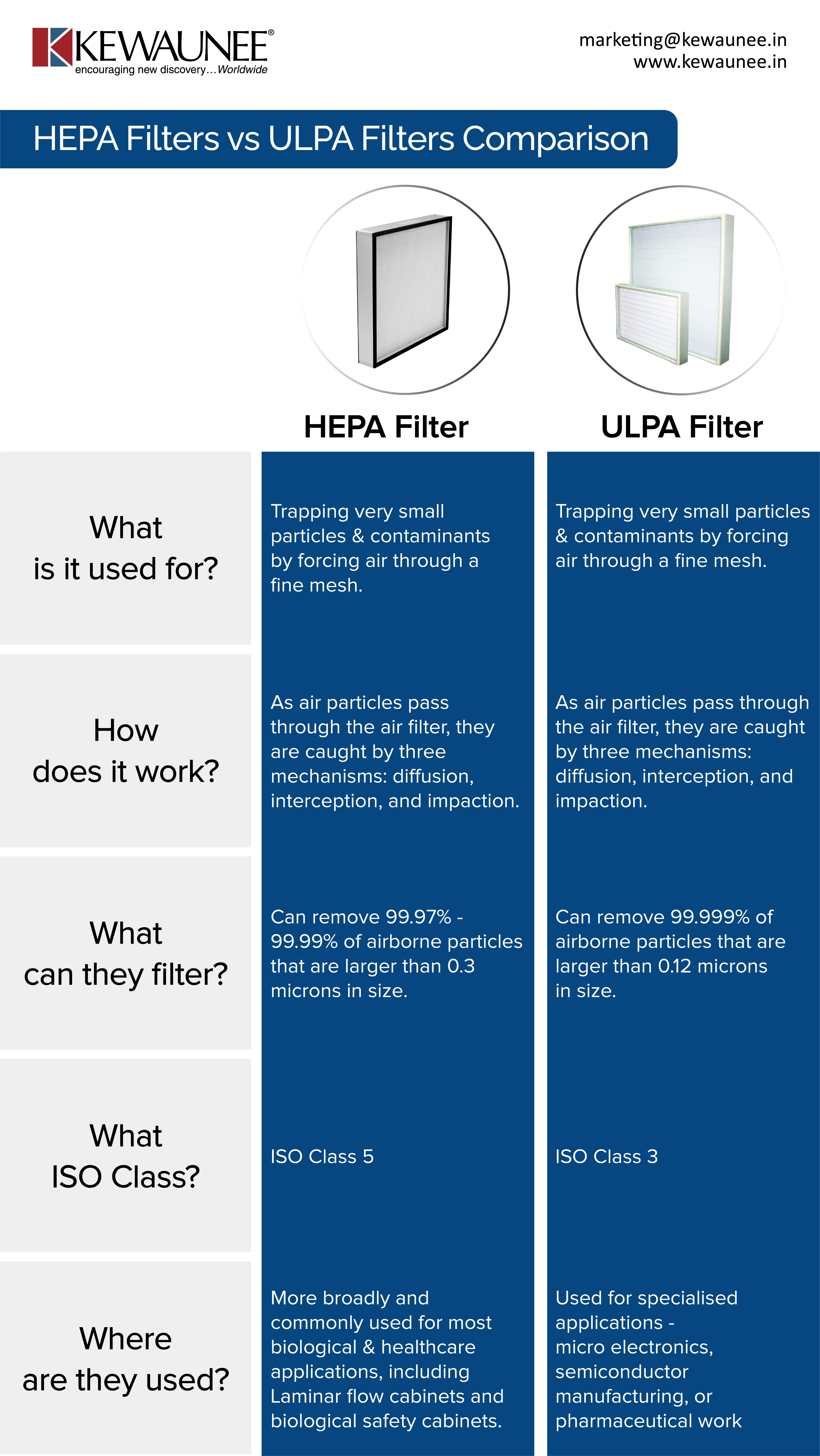Hepa Filters Vs Ulpa Filters Comparison
Clean environments like biosafety cabinets, laminar flow cabinets, and clean rooms require a controlled environment free from dust, particles, and contaminants.
HEPA (high efficiency particulate air) and ULPA (ultra-low particulate air) filters are commonly used in the air filtration systems for delivering a controlled environment.
How does HEPA & ULPA compare?
| HEPA | ULPA | |
| What is it used for? | Trapping very small particles & contaminants by forcing air through a fine mesh. | Trapping very small particles & contaminants by forcing air through a fine mesh. |
| How does it work? | As air particles pass through the air filter, they are caught by three mechanisms: diffusion, interception, and impaction. | As air particles pass through the air filter, they are caught by three mechanisms: diffusion, interception, and impaction. |
| What can they filter? | Can remove 99.97% – 99.99% of airborne particles that are larger than 0.3 microns in size. | Can remove 99.999% of airborne particles that are larger than 0.12 microns in size. |
| What ISO Class? | ISO Class 5 | ISO Class 3 |
| Where are they used? | More broadly and commonly used for most biological & healthcare applications, including Laminar flow cabinets and biological safety cabinets. | Used for specialised applications – microelectronics, semiconductor manufacturing, or pharmaceutical work |
Additionally, in ULPA the airflow reduces by 20% to 50% for filters of the same dimensions. The cost of ULPA is typically higher by 25% to 35%, and life span of ULPA is 5-8 years compared to HEPA’s ~10 years.
Comments are closed.











